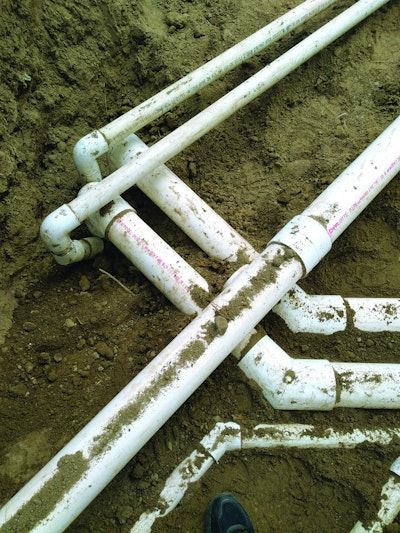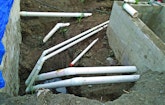
The best koi pond designers use a wide-diameter pipe, like 4-inch or larger, with no angle fittings. If corners need to be made, they should be 90-degree sweeps or flex pipe. (Photos by James Careless)
At first glance, plumbing a koi pond — a backyard body of water stocked with colorful fish — looks simple. You connect the pond, bottom drain(s), skimmer and filters together using pipes and pumps into a continuous closed loop system — just as you would a swimming pool.
Except,...







